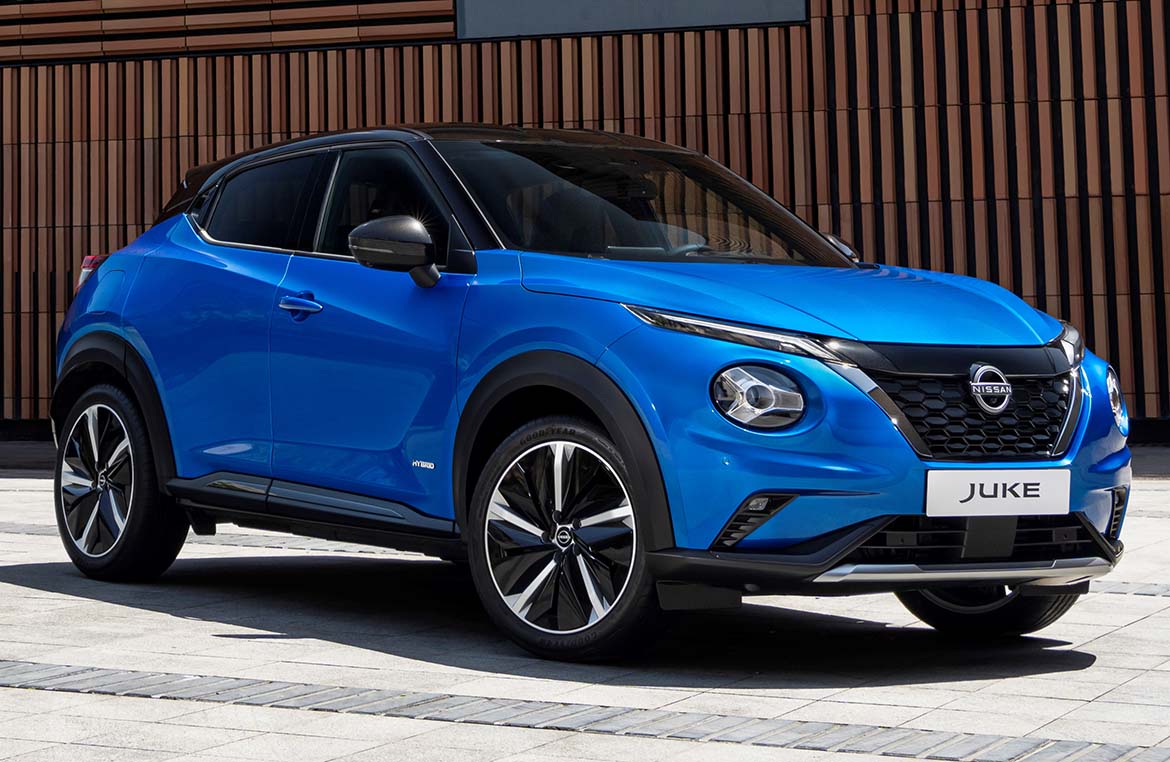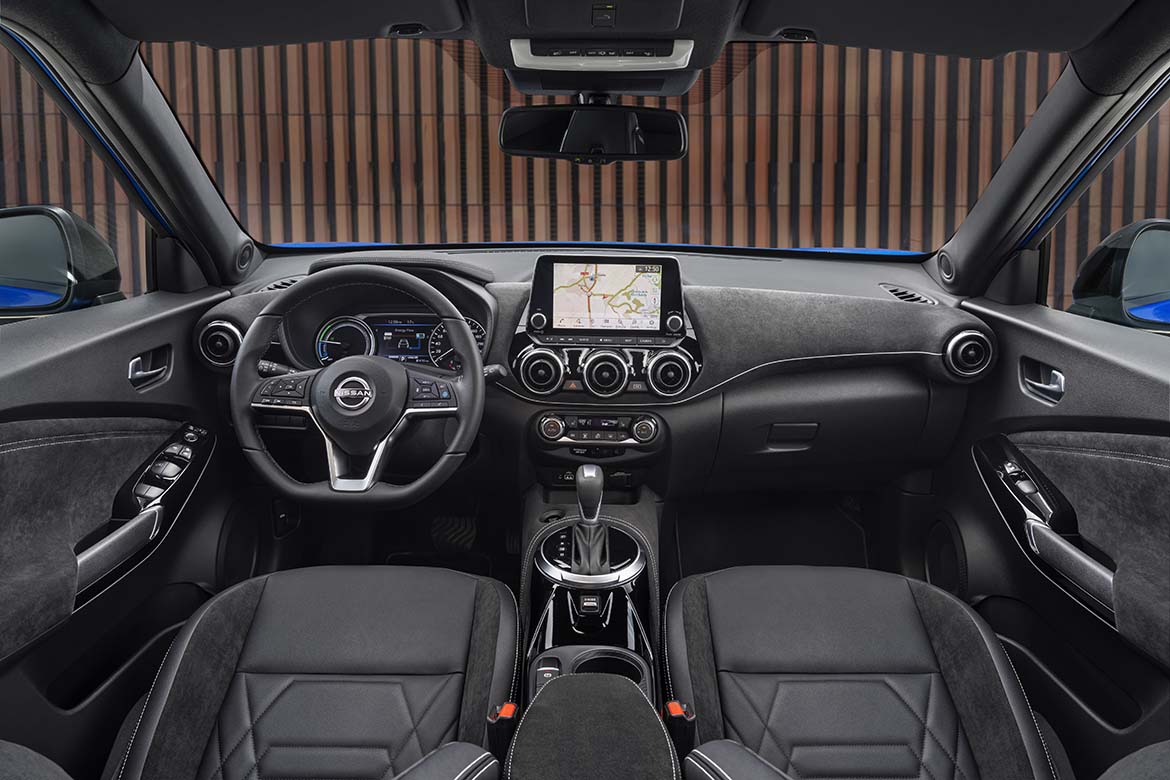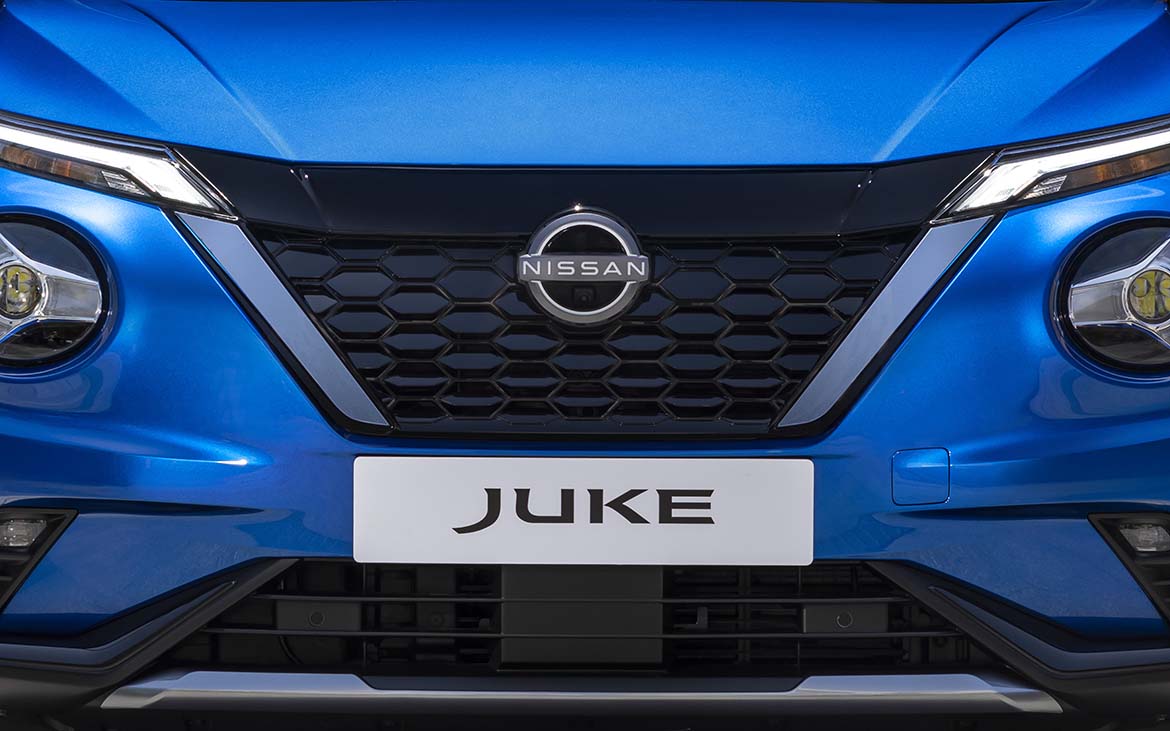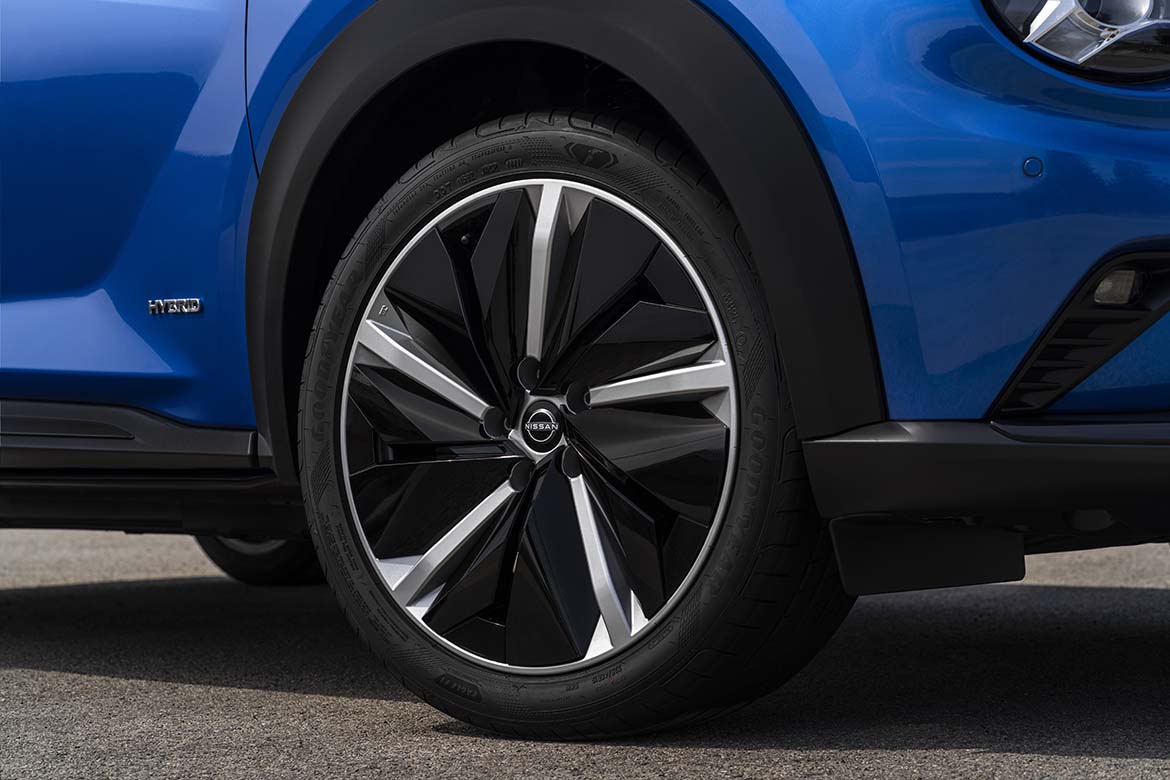With the gradual transition to electric, manufacturers are faced with a dilemma that currently sees manufacturers split almost equally between those who choose to highlight the green side of their models, separating them also stylistically from traditional ones, and those who instead aim to normalise the hybrid and electric with as ordinary a look as possible.
Nissan has decidedly chosen the first line, as was to be expected from someone who, with its Leaf, in fact introduced the first expressly conceived electric car. With the arrival of the hybrid version of the Nissan Juke, introduced to the press these days, the company has even inaugurated a new way of integrating electrification into the styling language of a model that offers more than one version.
In fact, the Juke Hybrid differs from the petrol-only model with the presence of a glossy black fascia at the top of the grille, the thickness of which symbolises the degree of electrification: averagely light on this model – which is in any case a full hybrid – it will become thicker on possible plug-in models until it completely covers the grille on the new 100% electric models such as the Ariya crossover. That’s not all: beneath this fascia there’s a honeycomb grille with partially closed three-dimensional elements that leave small slits partly hidden from view for engine compartment ventilation.
Added to this are aerodynamically reshaped front wheel arches and spoilers, a larger underbody fairing, specific 19-inch Aero alloy wheels (inspired by those on the Ariya) as standard with the N-Design trim and, of course, Hybrid badges on the front doors and tailgate. In addition, the new Electric Blue hue was chosen as the début colour. Less conspicuous are the differences on the inside, where the graphics of the digital instrumentation change and the e-pedal function button for “single-pedal” driving appears on the tunnel and the EV electric drive button appears higher up between the air vents.















